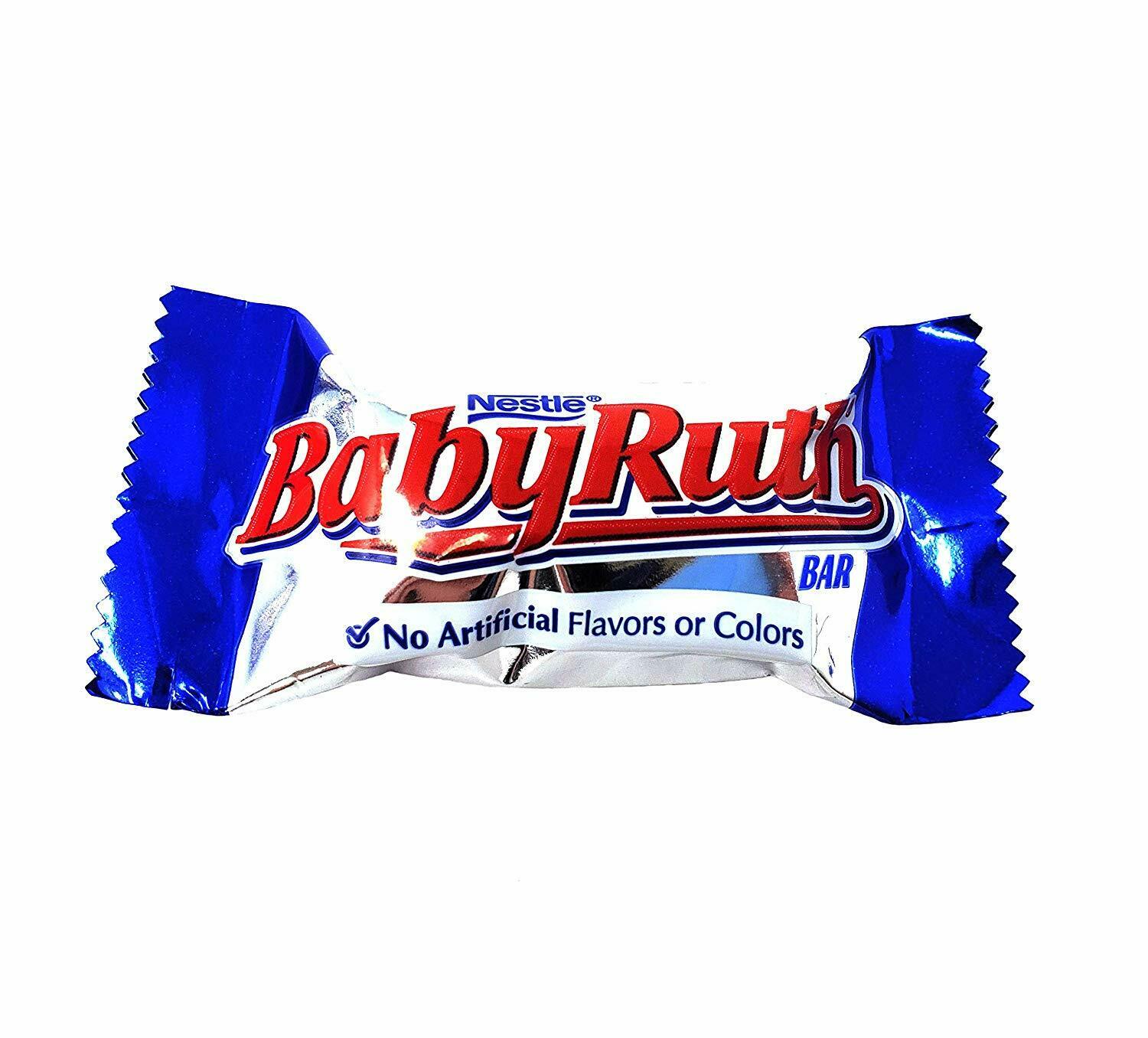
In 1929, the Curtiss Candy Company sponsored The Baby Ruth Hour, a CBS Radio program. Thereafter, Schnering performed the parachute drops in various cities in over forty states. To promote the candy, company founder Otto Schnering chartered a plane in 1923 to drop thousands of Baby Ruth bars, each with its own miniature parachute, over the city of Pittsburgh.

He continues to say that "the Baby Ruth bar came about when Otto Schnering, founder of the Curtiss Candy Company, made some alterations to his company's first candy offering, a confection known as 'Kandy Kake.'" Marketing However, David Mikkelson of denies the claim that the Williamsons invented the recipe, as George Williamson was head of the Williamson Candy Company, producers of the Oh Henry! bar. George Williamson, candy makers who developed the original formula and sold it to Curtiss." (Williamson had also sold the " Oh Henry!" formula to Curtiss around that time.) The write-up goes on to note that marketing the product as being named for a company executive's granddaughter would likely have been less successful, hence their "official" story. He also cites More Misinformation, by Tom Burnam: "Burnam concluded that the candy bar was named.
#BABY RUTH CANDYBAR SERIES#
In the trivia book series Imponderables, David Feldman reports the standard story about the bar being named for Grover Cleveland's daughter, with additional information that ties it to the President: "The trademark was patterned exactly after the engraved lettering of the name used on a medallion struck for the Chicago World's Columbian Exposition in 1893 and picturing the President, his wife, and daughter Baby Ruth." However, this may have been an after-the-fact covering maneuver.

In a patent appeal, Curtiss successfully shut down a rival bar that was approved by, and named for, Ruth, on the grounds that the names were too similar. The company did not negotiate an endorsement deal with Ruth, and many saw the company's story about the origin of the name to be a devious way to avoid having to pay the baseball player any royalties. The candy maker, located on the same street as Wrigley Field, named the bar "Baby Ruth" in 1921, as Babe Ruth's fame was on the rise, 24 years after Cleveland had left the White House, and 17 years after his daughter, Ruth, had died. Etymology īox of Curtiss' Baby Ruth candy bars at a general store in Portsmouth, North CarolinaĪlthough the name of the candy bar sounds like the name of the famous baseball player Babe Ruth, the Curtiss Candy Company traditionally claimed that it was named after President Grover Cleveland's daughter, Ruth Cleveland. This gives the new recipe a cleaner peanut flavor profile. The new recipe includes dry-roasted peanuts grown in the United States, whereas previous versions contained peanuts roasted in oil. Ferrero folded production of the acquired brands into the Ferrara Candy Company.įerrara relaunched Baby Ruth, along with 100 Grand, in December 2019. Ferrero acquired Nestlé USA's confectionery brands, including Baby Ruth, in 2018.

In 1990, RJR Nabisco sold the Curtiss brands to Nestlé. The bar was a staple of the Chicago-based company for more than six decades.Ĭurtiss was purchased by Nabisco in 1981. In 1920, the Curtiss Candy Company refashioned its Kandy Kake into the Baby Ruth, and it became the best-selling confection in the five-cent confectionery category by the late 1920s.


 0 kommentar(er)
0 kommentar(er)
